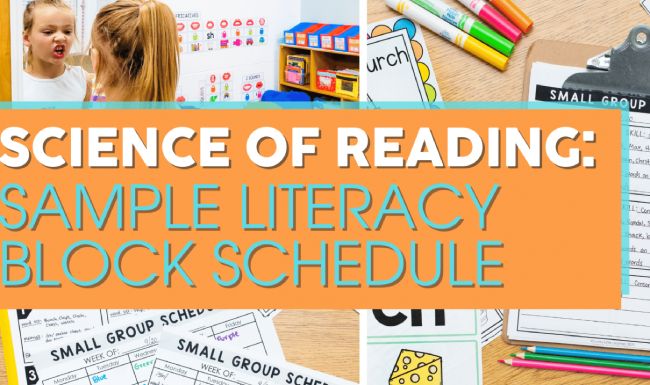In a way, the national discussion about what needs to be done to ensure that all children become proficient readers has been extremely fruitful: Legislation supporting evidence-based teaching methods is being passed by states, and school districts are rushing to provide training. Publishers are under pressure to eliminate outdated content. And for the first time in a long time, the education media are focusing on reading, an instructional issue.
However, in the midst of all of that, literacy instruction has been overlooked in favor of the “science of reading.” writing.
Writing is essential for all students to learn because it is the primary form of human communication beyond speech. In addition, research indicates that teaching students to write alongside reading is not only efficient but also effective.
Wiley Blevins, an author and literacy consultant who offers training to schools, stated, “Sometimes, in an early-literacy classroom, you’ll hear a teacher say, ‘It’s time to pick up your pencils.'” However, you should have your pencils in your hands almost all morning.
Surprisingly, many of the criticisms that reading researchers have leveled at the school-wide “balanced literacy” approach over the years could also be applied to writing instruction: Phonics and language structure, two fundamental writing skills, have not typically been taught explicitly or systematically.

Additionally, writing instruction has tended to focus on content-neutral tasks rather than strengthening students’ connections to the material they are learning, similar to the “find the main idea” strategies taught in reading comprehension.
Education Week wants to make these connections in the stories in this special collection more prominent. But first, we want to go over the reasons why writing should be taught at every stage of the elementary curriculum.
Why has the discussion about reading lacked writing?
Even though they have traditionally been taught separately, reading and writing draw on shared knowledge, just like the body of knowledge on how children learn to read words.
The number and quality of the studies in the body of research are significant. According to Timothy Shanahan, an emeritus professor of education at the University of Illinois Chicago, “There is no question that reading and writing share a lot of real estate, and they depend on a lot of the same knowledge and skills.” Pick a location: “World knowledge,” text structure, vocabulary, sound-symbol relationships.
Numerous factors contribute to the division between reading and writing. One reason is that the two fields have typically received separate research. Most writing researchers didn’t look at whether a writing intervention helped students improve their reading skills or the other way around.
The National Reading Panel report, which was commissioned by the federal government and outlined important instructional aspects of learning to read in 2000, is also criticized by some academics. The connection between reading and writing was not examined in the review.
Insights can also be gained by looking back even further. In the past, only penmanship and spelling were taught in writing classes. When writing came back in the latter half of the 20th century, it tended to focus on “process writing,” putting more emphasis on personal experience and story creation than on other genres. Writing about nonfiction texts and across subjects—the idea that students should write about what they’ve learned—was only emphasized in the Common Core State Standards in 2010.
Lastly, teaching writing is difficult. There aren’t many studies that show how teachers are prepared to teach writing, but many teachers in surveys say that their college education courses didn’t give them much training. In a 2016 survey, only slightly over half of teachers reported that they enjoyed teaching writing.
Writing should start in the early grades All of these things work against what is probably the most important conclusion from research over the past few decades: Students in the early elementary grades require numerous and varied writing opportunities.
Dana Robertson, an associate professor of reading and literacy education at the school of education at Virginia Tech who also studies how instructional change takes root in schools, stated, “Students need support in their writing.” Writing strategies and skills must be explicitly taught to them, and they must recognize the connections between reading, writing, and knowledge acquisition.
Although research supports some fundamental tenets of writing instruction, such as the need for structure and the inclusion of drafting and revising, it has not yet identified a particular teaching strategy that is most effective.
The researchers point out that while reading curricula have improved over time, they still typically do not provide many writing support resources for students or teachers. Teachers frequently have to add content that doesn’t always fit with their core, grade-level instruction.
Shanahan stated, “We have a lot of writing activities that we know are good.” In writing, we don’t really have a year-long elementary school curriculum. That simply does not exist in the same way that reading does.
However, even in the earliest grades, practitioners like Blevins incorporate writing into every reading lesson. Writing activities can also help improve all aspects of a successful reading program.
Students should not just orally manipulate sounds when working on phonemic awareness, or the ability to recognize sounds; They can use letters to put them on the page. Encoding—recording written letters and words while speaking the sounds aloud—is another skill that can be learned by students while they are studying decoding.
Additionally, as they begin to learn about language structure, students can write. Writing can support students’ understanding of how texts and narratives function when they are primarily working with decodable texts with controlled vocabulary, as with Blevins’ students: how sentences are made and how they can be taken apart and put back together. In these tasks, teachers can prompt them by asking them to split up two sentences, combine them, or rephrase a sentence as a question.
“Young children are writing sentences that are miles long and become second nature. They are fully capable of meeting our higher standards. Blevins stated, “If we develop early on how to talk about sentences—how they are created, how they are joined,” we can demystify some of that complex text. You can get a lot of practice and a better understanding of how sentences work by doing all of these things.
This structured work becomes more complex as students progress through elementary school. They need to be taught how to structure sentences and paragraphs, as well as how narrative, persuasive, and analytical writing all require different approaches. Most importantly, the research indicates that students require frequent opportunities to write in depth.
Writing can be used to help students explore content. Reading, of course, is much more than just foundational skills. It entails exposing students to the specialized vocabulary and rich content of each subject and making certain that they read, discuss, analyze, and write about those concepts. The process of building students’ knowledge in a systematic way begins in the early grades and continues throughout their K-12 education.
Again, the evidence suggests that writing can be an effective tool for assisting students in exploring, deepening, and connecting this material. In addition to their creative writing, writing can be a way for students to retell and analyze what they have learned in discussions of content and literature throughout the school day with the right supports.
This “writing to learn” strategy doesn’t have to wait until students have mastered the fundamental skills. Teacher read-alouds and conversation, which often include more complex vocabulary and concepts than the texts students are able to read, are used to teach a lot of material, especially in the K-2 grades. However, experts assert that this should not prevent students from writing about this material.
We write about what we’ve learned in a read-aloud or media piece. It’s just part of how you respond to texts and share what you’ve learned; Blevins stated, “It is not a separate activity from reading.” My decodable texts will be about animals if I’m doing read-alouds on a topic, like animal habitats. We’ve elevated the conversations around these texts, so students can include some of these more sophisticated ideas and language in their writing.
Education Week looks at the connections between reading and writing at the elementary level in three areas: encoding, language and text structure, and content-area learning. Yet there are numerous additional examples.
When you’re done, write to us to share yours.
